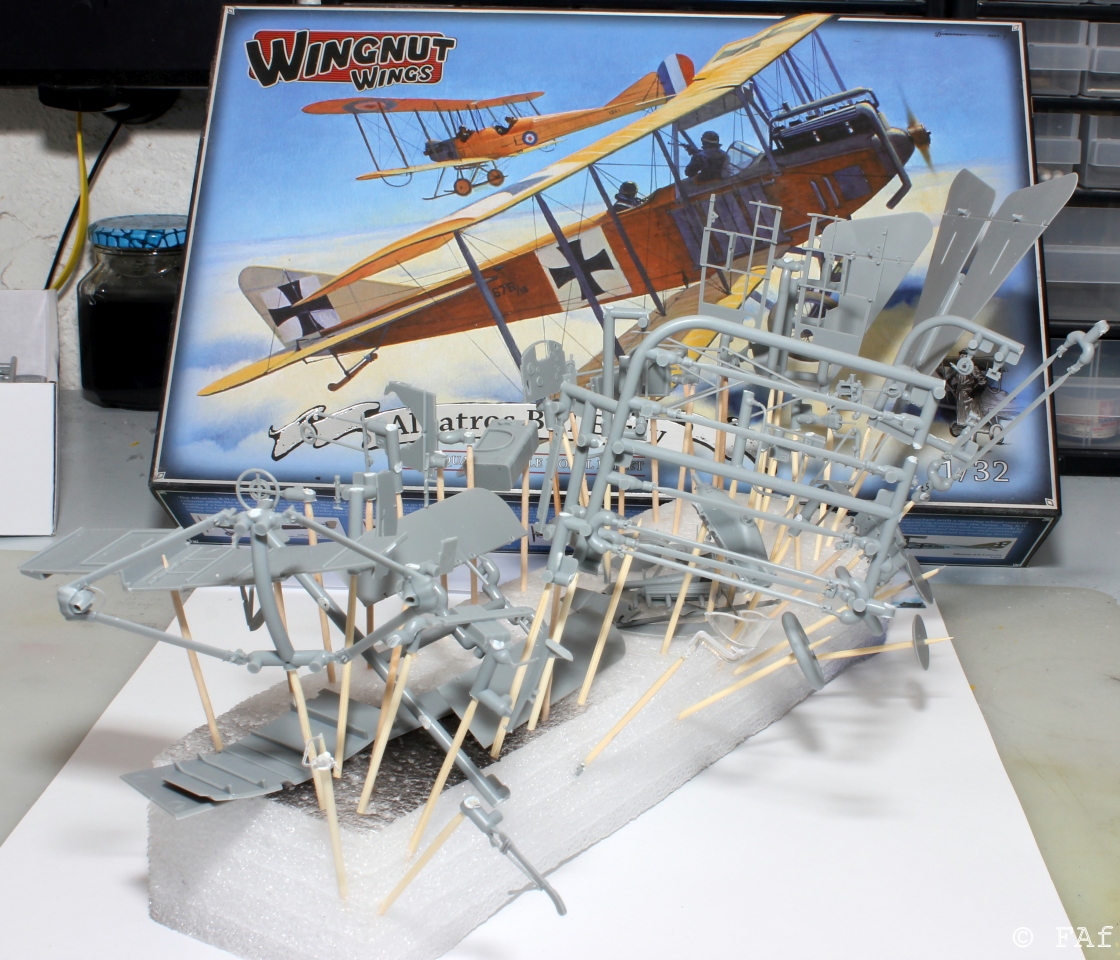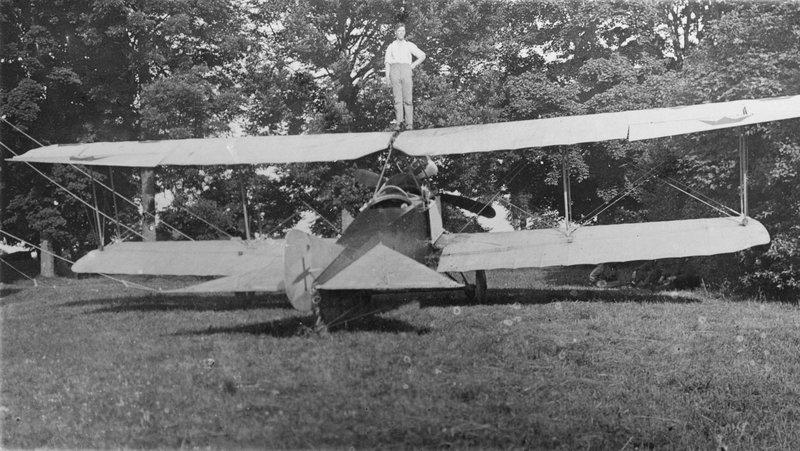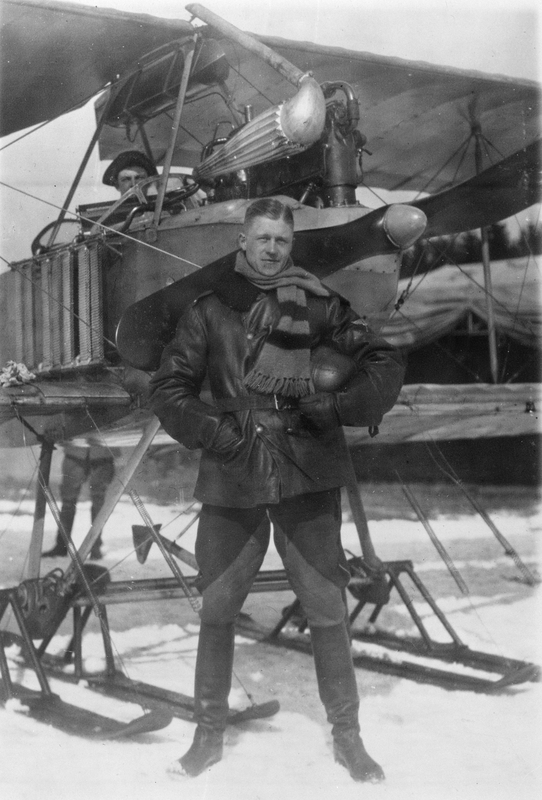Hello again... after a longish period of inactivity I've found some modelling mojo again.
Next year the Swedish Air Force celebrates its centenary and I'm planning to build my WNW Albatros B.II in Swedish markings as a celebration of that, although the aircraft will be pre-SwAF and rather show the beginnings of the air force before it actually became one. Work has started and almost everything is ready for primer.

But, there are a few issues... The history of the Albatros in Sweden begins just before the war breaks out in 1914. A German pilot, Lothar Wieland, was asked by Albatros Flugzeugwerke to make a promotion tour from Berlin to Copenhagen, Stockholm, St. Petersburg, Warsaw and back to Berlin. That tour was cut short as he and a Danish passenger, on 26 July, landed in Stockholm. Wieland was unfortunate enough to hit a patch of soft ground and the aircraft turned over with some damage to the propellor, wheels and the rudder. Spare parts were ordered and arrived, but the new propellor didn't fit and then the war broke out.
Wieland was allowed to return to Germany, but the aircraft stayed in Sweden where it was repaired and then flew on until 1918 as number '6'. During the repair work the airframe was measured and copied and later at least five different manufacturers produced their own variants, some closer to the original than others. These manufacturers were Svenska Aeroplanfabriken (SAF), Sodertelge Werkstader (SW), Marinens Flygvasende (MFV), Nordiska Aviatikbolaget (NAB) and Flygkompaniets Verkstader Malmen (FVM).
Using an online service known as 'DigitaltMuseum' (
digitaltmuseum.se) you can find quite a lot of images of the different Albatroses in Swedish service by just typing in 'Albatros'. After looking through the photos it becomes obvious that the easiest choice is to build either the original German Albatros labelled '6' or one of those build by Sodertelge Werkstader under the designation SW12. Most of the other copies used a different engine, how different I don't know but the SW12 used the 100 hp engine that comes with the kit which makes it easier. Most of the other copies also used a different radiator setup. Some copies, later versions perhaps, also had different aileron and rudder designs.
So, having decided on the original '6', or possibly one of the four SW12 aircraft as the differences are almost non-existent but several SW12's were issued with skis which are available via the Swedish company Flying Bear, there are still a few things that will have to be changed compared to the kit in the box. Below you see three images from DigitaltMuseum. The first two are of the German original, now in Swedish service as '6', one earlier photograph and one later. The last photo is of an SW12 with skis.



I can spot three important, but fairly easy, modifications.
First, even on the original '6' the elevator and rudder lines are routed differently than the kit version. So I'll have to patch up the holes in the tailplanes and make new exit holes in the fuselage for the wires.
Second, the rudder is different from the kit version. There is a possibility that the earlier photo of '6' shows the kit version (see below), but I think it's likelier that it is the more rounded version we see in the second photo. Almost all other photos of the early Swedish Albatroses have this rounded rudder.
Third, the exhaust is of a kind that isn't in the kit. Obviously, the first photo show a completely different engine and radiator and I won't be building that, but the later photo shows the side mounted radiators and this other style of exhaust which suggests a different engine. This exhaust is clearly visible in the last photo and I think that I can get away with using the collector part that comes with the kit and then 'only' fashion the very front end and the pipe that goes up and backwards.

The first fix is super easy I hope, just filling the holes and sanding. Making a new rudder seems easy, but does anyone have any suggestions on how to go about it - plasticard simply?! For the third modification I'm thinking about roughly shaping the front end of the exhaust with Milliput, sand that to shape and then add a piece of tubing of the correct diameter, but if anyone has any other ideas on that feel free to let me know.
Take care!
/Fredrik